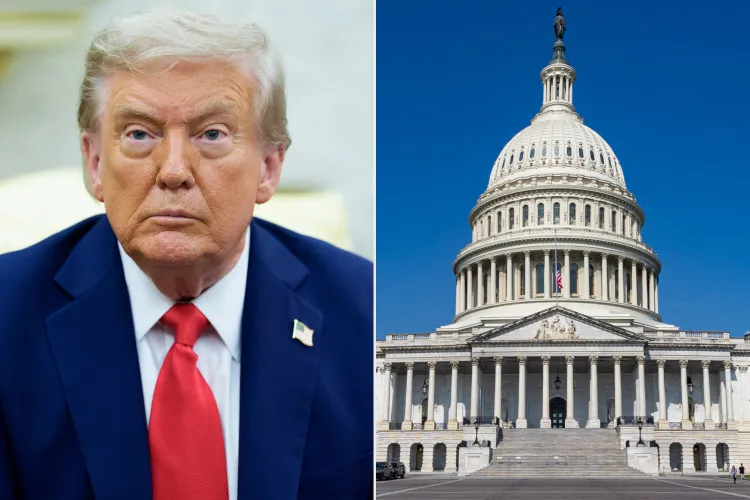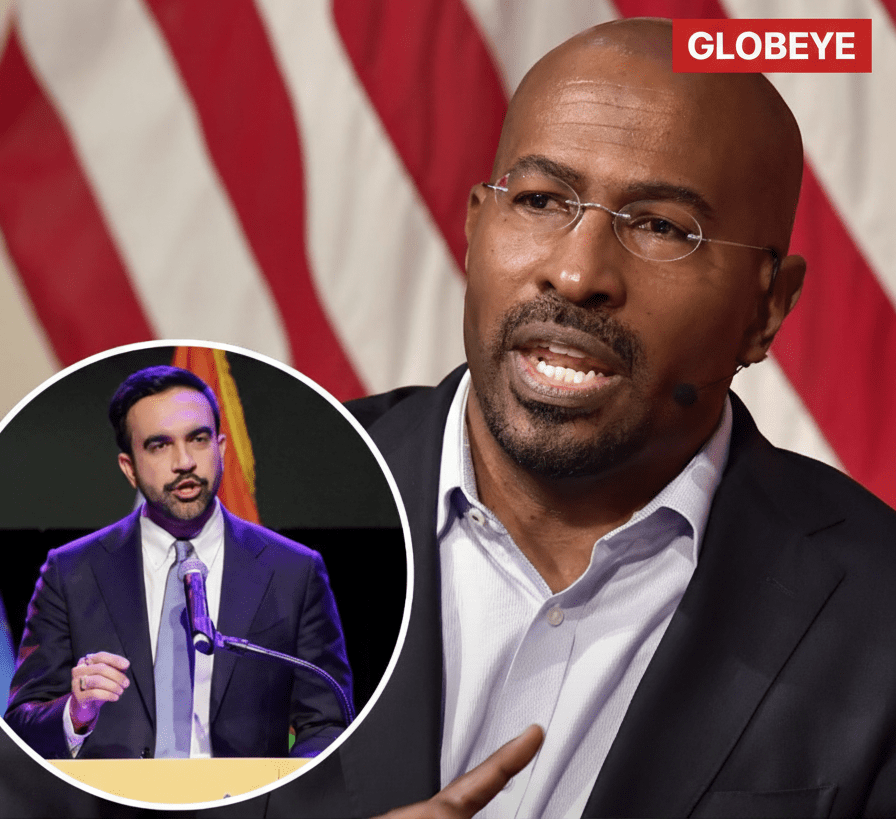The 2025 Government Shutdown Has Officially Surpassed Trump’s 35-Day Record — Leaving Millions of Americans in Crisis
The federal government of the United States has now entered Day 36 of a shutdown that began on October 1, 2025, making it the longest such funding lapse in the nation’s history. Previously, the record of 35 days was held by the December 2018–January 2019 closure during the first term of President Donald Trump. At its root, the impasse reflects a bitter stalemate in Washington: Republicans, including the House-led majority under Speaker Mike Johnson, refuse to advance a clean continuing resolution funding government agencies, while Democrats, led in the Senate by Minority Leader Chuck Schumer and in the House by Minority Leader Hakeem Jeffries, insist that any deal must extend or protect tax credits tied to the Affordable Care Act (ACA) that millions of Americans rely on.

The consequences of a stalemate of this magnitude are far-reaching and increasingly personal for ordinary Americans. Consider the case of the Supplemental Nutrition Assistance Program (SNAP) benefits, which help roughly 42 million people buy groceries each month. The United States Department of Agriculture (USDA) has announced that because funding has lapsed, it cannot guarantee benefits beyond the beginning of November – and is not tapping its roughly $5 billion contingency fund for this purpose. For federal workers, the shutdown means that more than 600,000 employees are furloughed without pay, and another 700,000 are working without knowing when a paycheck might arrive. Offices are shuttered, travel delays are mounting, and state governments and local municipalities are wrestling with cascading knock-on effects. The Congressional Budget Office estimates the economic cost could reach up to $14 billion in lost GDP — and that is before the full ripple effects take hold.
In Washington, the tone has shifted from routine budget negotiations to a pitched political clash. President Trump has declared that he will not be “extorted” by Democrats seeking concessions on the ACA. He has urged Republicans to consider ending the filibuster in the Senate — a structural change Senate Majority Leader John Thune says his party does not support. Meanwhile, top union officials representing federal workers are publicly calling for an end to the shutdown, warning of long-term damage to morale and trust in government operations. The silence of resolution is deafening. On Tuesday, November 4, the Senate held its 14th vote on the continuing resolution, and once again failed to reach the 60-vote threshold needed to advance the measure. Only three Senate Democrats voted in favor of the GOP-backed funding bill. House Speaker Mike Johnson acknowledged that even he did not expect the shutdown to drag on this long. “We couldn’t have imagined it’s now tied with the longest shutdown in history,” he said.
For many Americans, however, this is not a dry budget story but a human one. At food banks across the country, leaders are bracing for a surge of new demand as SNAP benefits run out. One woman who depends on the program told a reporter: “They just cancelled the benefits without warning — it’s tricky to ask my children for help.” Air traffic controllers, firefighters at naval bases, rural municipal employees and countless lesser-known civilians are quietly bearing the burden of government decisions made far above their pay grade. Flights at bustling airports such as Newark and Dallas-Fort Worth have already seen added delays as the number of staff-calling-in-sick rises, an indirect effect of working without a paycheck.
Economists are watching the shutdown with growing concern. With key government agencies like the Bureau of Labor Statistics, the Census Bureau and the USDA unable to release normal data on employment, inflation and agriculture, decisions in the private sectors are now made with bigger blind spots. In short, the rhythm of the U.S. economy is being disrupted. The larger policy debate underpinning this mess is one of competing priorities and political brinkmanship. On one side, Republicans argue that funding the government without tackling broader structural issues — such as entitlement spending, border security, and long-term debt — is irresponsible. On the other side, Democrats insist that reopening the government without securing protections for vulnerable Americans — including those who rely on ACA subsidies and food support — is equally unacceptable. As Senate Minority Leader Schumer put it, the GOP cannot simply pass funding bills without engaging meaningfully with health-care policy and social-program safeguards.
Looking back at history, the previous longest shutdown occurred from December 22, 2018 to January 25, 2019, when President Trump demanded wall funding and House Democrats refused. That 35-day impasse cost the U.S. economy roughly $11 billion. The current episode, however, has the potential to outstrip that both in duration and in economic fallout. For families living paycheck to paycheck, this is not a policy war — it’s the difference between filling a pantry or skipping a meal, between keeping a roof over their heads or grappling with eviction, between staying insured or losing coverage come the New Year. The stakes are personal and immediate. In states across America, governors are preparing for what happens when the federal safety net buckles: local governments begin filling the void, emergency services strain under increased demand, and the strongest among us become the first to step forward to help neighbours. Food banks and local nonprofits are already expanding operations just in case.
Political analysts warn that prolonged shutdowns bring more than short-term pain. They erode public trust in government, chip away at morale in the civil-service workforce, and complicate long-term planning for businesses and municipalities that rely on federal funds. One premier union leader described the moment as “a demand for a deal, not another delay game.” As November wears on, the countdown has shifted from days to hours for millions of Americans who are staring at deadlines they cannot afford to miss. Enrollment for ACA marketplace plans opened at the beginning of the month, but without subsidies secured, premiums are projected to rise by as much as 26 percent for some Americans. Meanwhile, state and local agencies that depend on federal appropriations or reimbursements — for disaster relief, transportation, research grants and public safety — are facing an escalating budget squeeze.
The human toll is quietly mounting while the Washington chatter remains loud and partisan. Behind every headline about a failed vote or political strategy lie people who are hungry, anxious, unpaid and uncertain. Someone in Oklahoma who counts on SNAP, someone in Virginia waiting for a delayed paycheck, someone in Montana trying to sort insurance options, someone in Florida working an essential job without a guarantee of pay. The shuttered offices, flight delays, cancelled public-program launches and fatigued federal employees are not just collateral damage — they are the lived reality of this shutdown.
For the leadership in Congress and the White House, the path back to reopening the government is clear in theory but treacherous in practice. The Republicans already control the House, and they have a funding bill on the table. But the Senate requires 60 votes to overcome a filibuster, and only three Democrats have voted in favour so far. The Democrats, meanwhile, hold a minority but are using that to demand policy concessions. As Senator Angus King, one of the three Democrats who voted yes, put it bluntly: “We need a substantive resolution, not just another patch.”
Time, however, is not the friend of any stalemate. With each passing day, the risk of cascading consequences — layoffs at state government, missed research grants, weaker national security readiness, travel-industry disruption — grows. Some analysts warn that if the shutdown extends into December, the costs could run into the tens of billions of dollars and set back federal programs for years. Meanwhile, American families, charities and local governments are drawing up contingency plans.
It feels unthinkable that in one of the wealthiest nations in the world, the machinery of government can grind to a standstill for more than a month, while millions of people stare at unknown futures. Yet here we are, at Day 36, and the debate is no longer about whether this becomes the longest shutdown — it already is. The pressing question now is whether Washington gives up its weapons, returns to the table, and remembers that governing is not a spectacle but a responsibility. Because those whose lives are quietly being uprooted by the lack of funding are watching — and the bill will come due long after the headlines move on.



